How to Stamp With an Acrylic Block for Beginners
Last Updated: August 28, 2025
Are you a stamping beginner who is in desperate need of a quick lesson on how to use your clear stamps? Would you like to learn the proper care and storage of your stamps collection? Do you want to find out how to use acrylic blocks properly? Let us fill you in on some stamping tips and hacks for beginner crafters like you!
Fun Facts About Stamps!
-
Over 4% of all people in the U.S. have stamps for craft in their tool kit! These are used for all kinds of craft projects including handmade cards, DIY gifts, scrapbook pages, decorative ornaments, journaling, tags, and more.
- Stamping is one of the largest categories that fall within the craft and hobby industry! Today, stamping is considered an essential part of craft in the nation. From 1996 through 2004, the sales of different types of stamps online have profusely increased across the United States. The year 2005 saw compressed sales for stamps for craft for the first time after many back-to-back years of exponential growth.
If you want to find out more about the history, production, usage, and different types of stamps online, CLICK HERE.
5-minute read on stamps, different stamps collection, how to use acrylic blocks, and where to buy stamps online!
What are the basic stamping supplies?
If you have been stamping for a while, you probably don’t need us to tell you about the basics. However, if you’re completely new to stamping, there are a few essential supplies that you need to have in your crafting stash.
-
Stamps - These are your investments. As a beginner in stamping, having a few decent, high quality, and versatile stamp sets is essential. You don’t need to splurge on these right away. Having a couple of stamps for craft from different categories or themes should be enough. Check out Altenew’s stamps collection here.
-
Acrylic block - Also known as stamping block, a stamp block, or an acrylic stamp block, this is your secret weapon. A stamper without an acrylic block is akin to a painter without a paintbrush. It’s good to keep a variety of sizes for different-sized stamp designs.
-
Inks - Dye ink, pigment ink, mixed media ink, and embossing ink - these are some of the inks that stampers commonly use for their crafts. Here is a quick guide on inks for paper crafting!
- Paper or Cardstock - Similar to a painter’s canvas, paper and cardstock are a stamper’s “blank canvas.” This is where the magic begins. Like every other basic crafting supply, you need to make sure that you get high-quality and durable paper and cardstock. You don’t want to spend hours creating your handmade cards or scrapbook pages only to realize the cardstock you used isn’t good enough.
Some optional stamping and crafting tools that you can get as you go through your journey are dies, stencils, alcohol markers, and watercolor pans.
What is an acrylic block?
An acrylic block or a stamp block is a piece of thick clear acrylic. It is usually square or rectangular shaped, but there are some circle-shaped and some with ridges or ripples on the edges for easier grip. Unlike rubber or wooden stamps for craft, clear acrylic stamps don’t have their own block or platform. They come in an acetate sheet and need to be mounted onto something in order to use them.
Acrylic stamp blocks serve as the platform for your photopolymer stamp. Here are some advantages of using an acrylic block:
- It is clear so you can see where your stamped image goes and where you’re stamping on your paper.
- You can easily change stamp designs since you just need to remove them from your block and replace them with a new one.
- It is super easy to use, even for beginner stampers.
- Acrylic stamping blocks usually have grid lines on them. These will help you line up your stamp image nicely on your paper or cardstock, especially when you’re doing stamp layering.
- It is easy to clean. You can just use wet wipes or a damp piece of cloth to wipe off the ink residue.
- It is travel-friendly. These blocks are relatively lighter than wooden blocks and less bulky. You only need to bring one or two of them when you travel or when you attend crafting workshops.
- One size fits all. If you get a decent, medium-sized acrylic block, you can use it for most of your stamp sets since the majority of stamp sizes will fit in nicely.
A quick guide on how to stamp with an acrylic block for beginners!
- To start, remove your chosen photopolymer stamp from the acetate sheet and place it onto your acrylic stamp block.
- You will need an acrylic block larger than your image but not too much larger as it will be more difficult to handle. This is why it’s important to invest in a few different-sized acrylic blocks for your convenience.
- Ink up your stamp using an ink color. To do this, place the acrylic stamping block (with the stamp attached to it) on a solid surface. It’s best to use a stamping mat or a crafting mat to ensure that your surface is smooth and clean.
- Take the ink pad to the stamp and gently tap it over the stamp to ensure that the whole stamp design is inked up nicely. PRO TIP! Never press the ink pad too hard or tilt it from side to side when inking up your stamp.
- Pick up the acrylic block and position the inked image into place.
- Stamp the inked stamp image down and firmly press all parts of the image onto the cardstock. Again, never tilt your acrylic block from side to side, just press on it gently.
- Remove the acrylic stamp block to reveal your stamped image.
Easy peasy, right? Remember to prep your photopolymer stamps collection before you start stamping away. New photopolymer stamps tend to be sticky so they need to be “seasoned” first. To do this, simply grab a rubber eraser and rub it all over the stamp. This will also help the ink cling better onto the stamp. Jennifer McGuire has a fun and informative video on how to get a clear stamped image and avoid splotchy images HERE.
Before we end this quick guide on how to stamp with an acrylic block, here are a few tips and hacks on how to properly care for and store your stamp and stamping acrylic block.
- Always clean your photopolymer stamps and your acrylic block. You may use wet wipes or baby wipes, but most stampers prefer a stamp cleaner and a stamp shammy.
- Most photopolymer stamps will get stains from inks. Do not panic! This is normal and it won’t affect the quality of the stamp.
- Never tilt your block from side to side while pressing on it.
- Keep your stamps collection away from dusty places because dust might cling onto it, this will make it hard for you to get a clear and crisp impression.
Season or prep new stamps by rubbing a white eraser all over them. This will ensure that the ink will cling nicely to the photopolymer stamp.
Now that you’ve got the basic stamping supplies, learned how to stamp with acrylic blocks, and proper care and storage of your crafting supplies, the next step is to find where to buy stamps online! Altenew has a wide selection of high-quality, beautiful, and unique photopolymer stamps for every occasion, celebration, season, and event! Find them HERE.








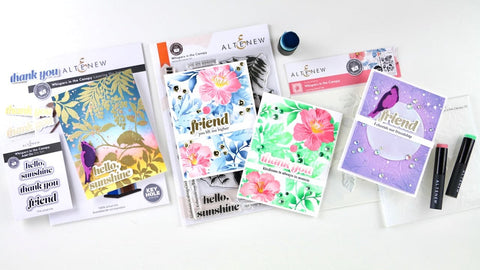





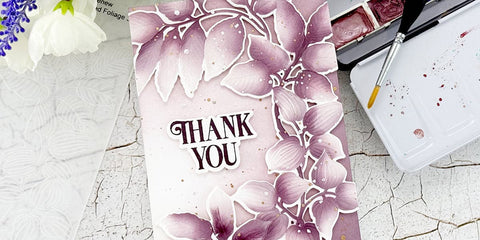
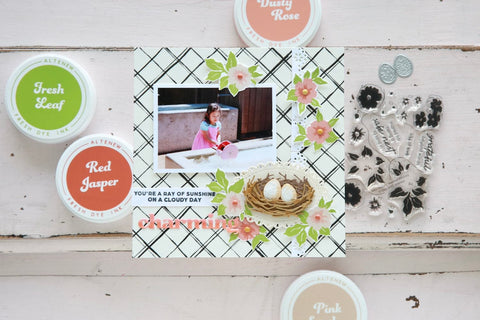
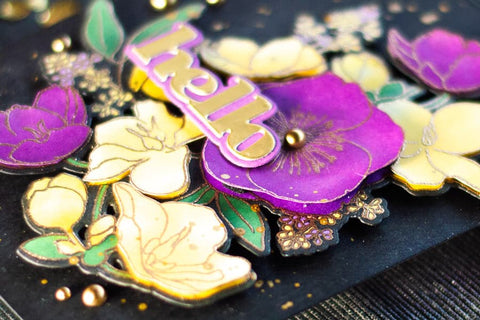
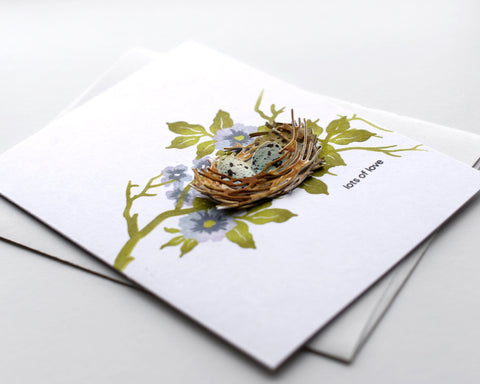



Do you put the clear stamps on the acryclic block on the side with the grids or the opposite side of the block? I thought the side without grids would be easier to clean.
Thank ye sooo much. This is the only site that is informative n basic for beginner !! The acrylic blocks came with my only set. But was at a loss as what to do with them ! Yeah, now I know !☺ happy days
I love altenew products the inventors have truely captured the beauty of flowers God has blessed us with.Its great to duplicate that in a card or craft for others.Thank you for sharing your gifts.And a shout out to Jennifer McGuire she makes everything look great.